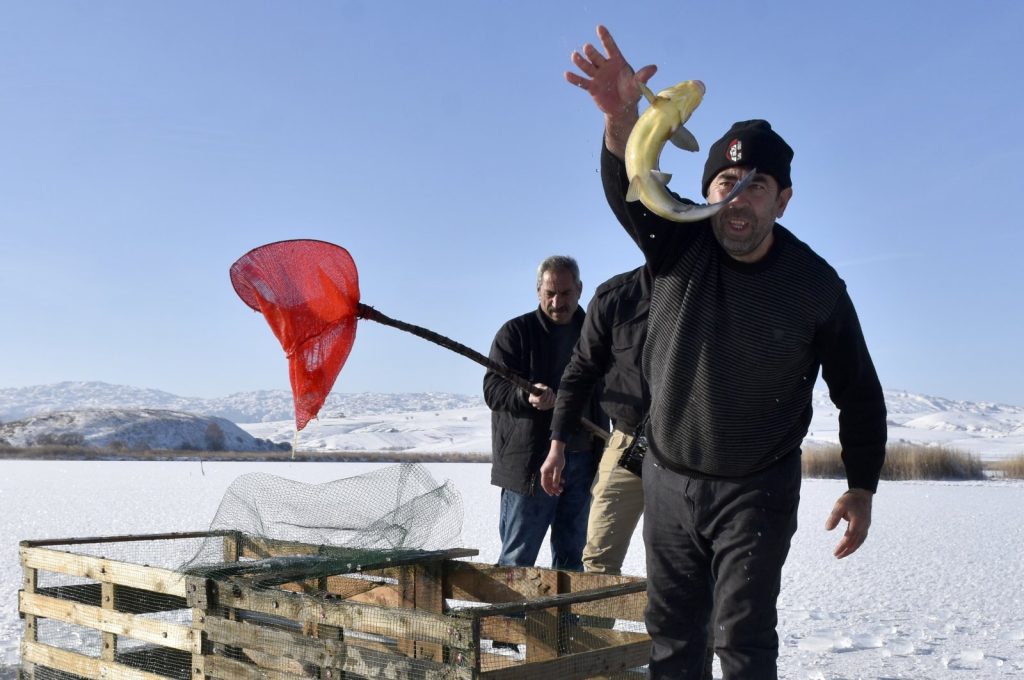In the eastern Turkish province of Sivas, cold weather has caused the region’s largest lake, Tödürge, and Hafik Lake to become completely covered in ice. With temperatures dipping below freezing, the lakes have created beautiful, icy landscapes. At Hafik Lake, fishermen have been breaking the ice on the surface to fish in the traditional Eskimo style.
The cold wave that has affected Sivas for over a week has taken its toll on rivers and lakes, causing many of them to freeze over. Tödürge Lake, which spans 5 square kilometers and is the largest lake in the region, has also frozen due to the frigid temperatures. Located 17 kilometers (10.5 miles) from the Zara district, the lake is home to various bird species such as the great crested grebe, red-necked grebe, storks, swans, coots, black kite, sea eagles, reed warblers and cranes.
Designated as a National Wetland Area and subject to a hunting ban, Tödürge Lake has taken on a unique beauty with its frozen surface. The lake, which reaches depths of up to 45 meters in places, was captured in stunning aerial drone footage as it was blanketed in white snow and ice.
Kadir Coşkun, a local resident, explained that Hafik Lake’s surface remains frozen for about two to three months each year. “When the temperature drops to minus 15 degrees (5 degrees Fahrenheit), the lake freezes. Once the ice forms, it stays for a long time, sometimes up to two or three months, depending on the weather. When the ice forms, we break it to let the fish breathe. If the ice isn’t broken, the fish die. We also fish for food here, with species like carp, silverfish and crucian carp,” he said.
Eskimo-style fishing, also known as ice fishing, is a traditional method practiced in cold regions where bodies of water freeze in winter. This technique involves cutting a hole through the ice on frozen lakes or rivers to access the water below, allowing fishermen to catch fish despite the thick ice cover.
It is deeply rooted in the history and culture of indigenous Arctic communities, who developed it as a means of survival in extreme cold. While it has become a recreational activity in many parts of the world, it remains an important tradition in areas like Sivas, where freezing temperatures are common during winter.


